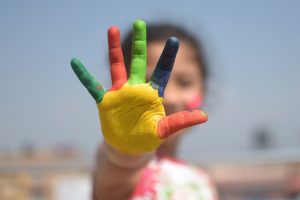(THIS ARTICLE IS MACHINE TRANSLATED by Google from Norwegian)
The term Third Culture Kids was launched in the 1950 century by American scientists John and Ruth Useem about the children of Americans who lived abroad and who created a new cultural group in the country they moved to. Third Culture Kids is the book about today's Norway, where children of the first generation immigrants, the "71s" or "the foreign workers", talk about their experiences with the third culture – which arises outside the parents' culture and in the encounter with the Norwegian culture.
Since my parents were born and raised in Turkey and I in Norway, I can choose my identity myself. I have chosen to identify myself as Norwegian, although I do not feel completely Norwegian or completely Turkish – the third culture that emerges makes me a third culture child, like the other young people in this book.
Root children
Third Culture Kids tells stories from the upbringing of the various contributors in Norway and recalls a summarized diary of private childhood images. It is personal, recognizable, courageous, honest and touching reading. This is a manifestation of identity and community that answers all the prejudices of our elongated country. I see and read about a group of people representing the present and the future.
I wish this book had come out when I was 20 years old, in the midst of the identity crisis and badly needed a definition of who I am and where I came from. Rootlessness and a lack of belonging are typical problems we third-culture children experience throughout their lives that make us feel different from everyone else. But even though rootlessness creates a constant turmoil, it also offers tremendous freedom – the freedom to belong anywhere.
The question "But where do you really come from?" We hear all the time. Every time I get asked, I have to give myself, my entire background and life story, and it's always just as tiring.

In the book, each story stands for its own. There is one story that stands out because it is written under the pseudonym "Aisha", while the other contributors have given their real name. Aisha is a partially open lesbian woman in her thirties with Somali parents, who writes about how difficult it is to be "a black, muslim and lesbian woman".
Aisha's parents do not know her sexuality orientering, even though they live in Somalia and she lives in Norway. She chooses to remain anonymous because she is not ready to be completely open about her orientation, partly due to shame and fear. Aisha's story adds a new dimension to the concept of third culture children and gives me a kind of awakening.
Several arenas
As I read Aisha's story, I think this is just the beginning – it just has to be. This book is incredibly important for understanding the present and the future, but we (both third-culture children and others) need more arenas than literature.
The fact that Aisha chooses to remain anonymous speaks for herself and makes the book real close and complicated. Yes, because to say the least it is complicated to stand with one foot in each camp. Aisha is one of many in need of professional help. Norwegian society, primarily institutions, plays a crucial role in following up those born and raised in a culture different from their parents. They need to be seen, listened to and taken seriously.
First and foremost, we need an organization where we can talk to professional professionals like psychologists and social workers, take language courses in our native language and gain insight into our parents' history, religion and culture – to better understand ourselves.
We need more books about third-culture children and more arenas where we can meet other like-minded people. The Swedish version of Third Culture Kids was released in 2017 with 40 different stories. I wish the same book could be published in every single European country. We are not just 29 and 40 – we are and are becoming more and more.
The ever-growing globalization is blurring the borders as different cultures meet. Third Culture Kids is a term we now use about multicultural people, but in the future new concepts will exist and cease – perhaps Multiple Culture Kids or just Humans – which should be the goal.






